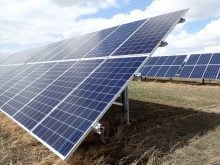A second year of severe spring flooding is focusing the spotlight on wetland and farm drainage and the question of whether drainage makes the flood situation worse.
Of course, the main cause of the flooding is above normal precipitation last fall and heavy snow pack this winter that saturated soils.
When all that snow melts, the water has to go somewhere.
This month we are finding out where it goes as it floods fields and pastures, washes out roads and damages property, cabins and homes.
Read Also

Farmer ownership cannot be seen as a guarantee for success
It’s a powerful movement when people band together to form co-ops and credit unions, but member ownership is no guarantee of success.
We appear to be in a wet cycle on the Prairies, similar to the 1970s, and the change is challenging assumptions and practices built up during a more recent string of dry years.
In dry or normal precipitation years, drainage can make prime lowlands available for cropping with today’s large machinery.
But drainage is always a volatile issue because it can exacerbate flooding problems for downstream residents and destroy wildlife habitat.
With so much water around this year, the problems attain a profile hard to ignore.
Ducks Unlimited Canada is trying to make wetland drainage an issue in elections this year in Saskatchewan and Manitoba, lobbying for provincial policies on wetland protection and restoration.
It would include regulations prohibiting wetland drainage, a formula for compensating landowners and enforcement mechanisms.
Ducks Unlimited says Canada loses 80 acres of wetlands to drainage every day, a lot of it on the Prairies. Ninety percent of the natural wetlands have been drained in some parts of Saskatchewan, it adds.
Its research in the Broughton Creek watershed in southwestern Manitoba suggests that wetland drainage has increased total runoff in the area by 62 percent and peak discharge by about 37 percent.
Wetlands hold back water, slowing its movement into creeks and rivers and reducing the intensity of flooding. The water in wetlands slowly seeps down, recharging aquifers that supply wells. Wetlands help reduce erosion and trap nutrients in runoff, storing them in plants and soil instead of the runoff flowing downstream into lakes where they feed algae blooms that harm water quality.
Wetlands are a priceless resource that need protection. The Wild West, anything goes attitude to drainage must stop.
Provincial drainage regulations need to be updated and enforcement of the laws must be beefed up.
Drainage regulation should be part of a comprehensive provincial water strategy of the type now being considered in Saskatchewan.
The goal of the strategy should be to provide landowners, municipalities, wildlife groups and other stakeholders with tools and a framework that will benefit all players. There is an opportunity to learn from Alberta’s recent experience developing a land-use strategy where public opinion turned against the process because it was seen as a top down edict and not a collaborative arrangement.
Drainage regulation must recognize farmers’ business, financial and taxation realities. Most farmers are happy to support the environment and wildlife.
Indeed, by some measurements the agricultural landscape is more environmentally friendly than it was 50 years ago. For example, there is more wildlife and a greater array of species.
However, farmers can’t carry the burden alone.
As much as possible, agricultural and wetland drainage should be managed in a co-operative way, emphasizing best management practices, to provide benefits to all.
Bruce Dyck, Terry Fries, Barb Glen, D’Arce McMillan and Joanne Paulson collaborate in the writing of Western Producer editorials.














